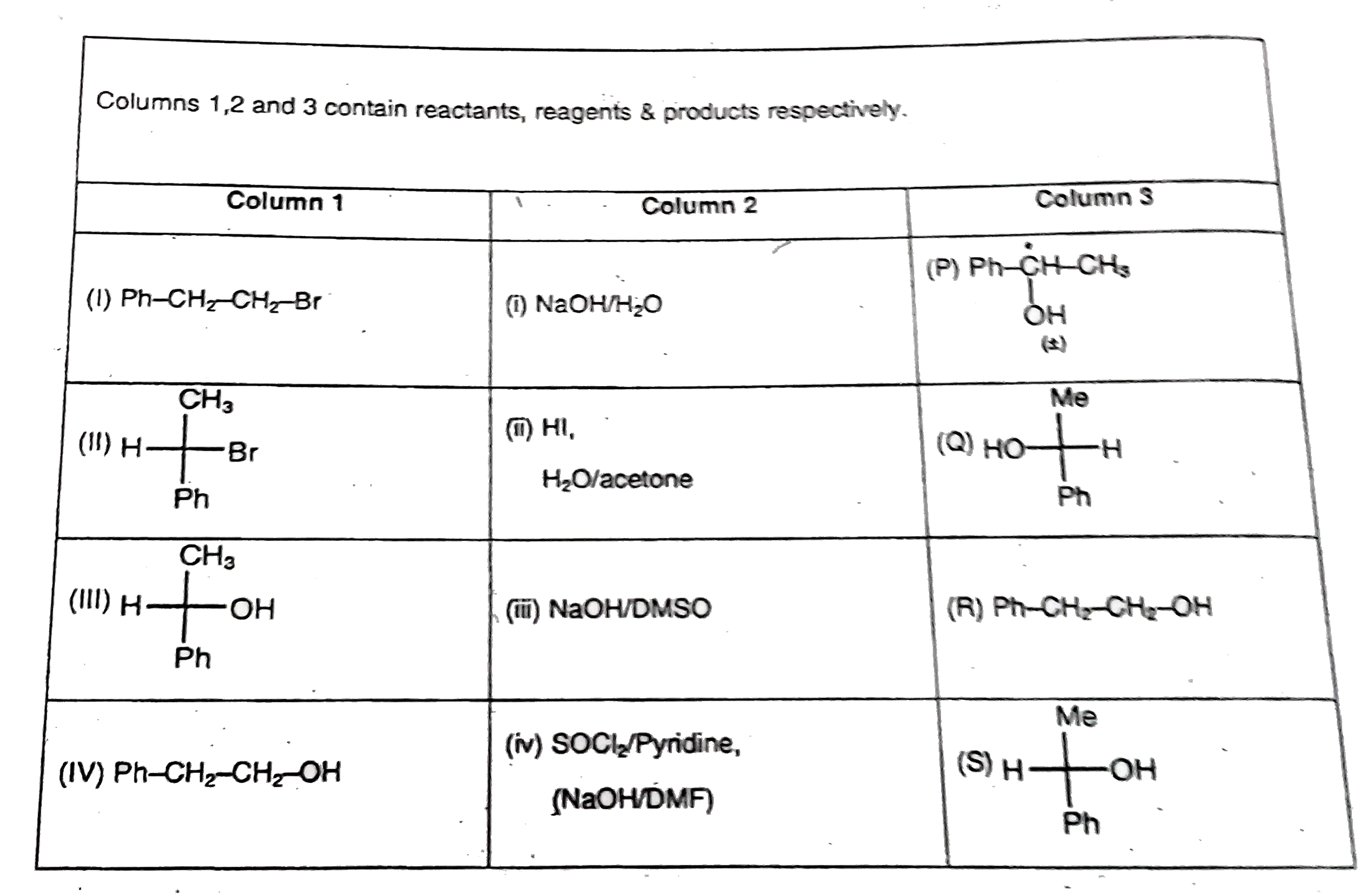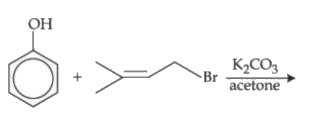When an alkylhalide is dissolved in ethanol the following reaction beings to occur .
R−X+EtOH
SN2mechanism−−−−−−−−→R−O−Et+HCI
The overall order of reaction is .
One
Two
Three
Four
The correct Answer is:B
To determine the overall order of the reaction when an alkyl halide (R-X) reacts with ethanol (EtOH) via an SN2 mechanism, we can follow these steps:
Step 1: Understanding the Reaction
The reaction given is:
R−X+EtOH→R−O−Et+HCl
This indicates that an alkyl halide (R-X) is reacting with ethanol (EtOH) to form an ether (R-O-Et) and hydrochloric acid (HCl).
Step 2: Identifying the Mechanism
The problem states that the reaction follows an SN2 mechanism. In an SN2 reaction, the nucleophile attacks the substrate in a single concerted step, leading to the formation of a transition state.
Step 3: Determining the Rate Law
In an SN2 reaction, the rate of the reaction depends on the concentration of both the substrate (alkyl halide, R-X) and the nucleophile (ethanol, EtOH). Therefore, the rate law can be expressed as:
Rate=k(R−X)(EtOH)
Step 4: Calculating the Overall Order of Reaction
The overall order of a reaction is determined by the sum of the powers of the concentration terms in the rate law. In this case:
- The order with respect to R-X is 1 (since it is raised to the power of 1).
- The order with respect to EtOH is also 1.
Thus, the overall order of the reaction is:
1+1=2
Conclusion
The overall order of the reaction when an alkyl halide reacts with ethanol via an SN2 mechanism is 2.
---
The reaction given is:
R−X+EtOH→R−O−Et+HCl
This indicates that an alkyl halide (R-X) is reacting with ethanol (EtOH) to form an ether (R-O-Et) and hydrochloric acid (HCl).
The problem states that the reaction follows an SN2 mechanism. In an SN2 reaction, the nucleophile attacks the substrate in a single concerted step, leading to the formation of a transition state.
In an SN2 reaction, the rate of the reaction depends on the concentration of both the substrate (alkyl halide, R-X) and the nucleophile (ethanol, EtOH). Therefore, the rate law can be expressed as:
Rate=k(R−X)(EtOH)
The overall order of a reaction is determined by the sum of the powers of the concentration terms in the rate law. In this case:
- The order with respect to R-X is 1 (since it is raised to the power of 1).
- The order with respect to EtOH is also 1.
1+1=2
The overall order of the reaction when an alkyl halide reacts with ethanol via an SN2 mechanism is 2.
Topper's Solved these Questions
Similar Questions
Knowledge Check
- Question 1 - Select One
For the following reaction
R−CNH3O+−−−→R−COOHAthere is protonation of electronegative nitrogenBan amide is formed as an intermediateCnitrogen atom is expelled as ammoniaDall are correct - Question 2 - Select One
Which of the following reaction follows SN1 mechanism ?
A(CH3)3C−CH2Cl+CH3OKB(CH3)2CHCH2Cl+KCNC(CH3)3C−Cl+NaOH(aq).D(CH3)2CHI+H2O - Question 3 - Select One
R−C≡NSnCl2+HCI−−−−−−−→XH3O+−−−→Y. this reaction is :
ARosenmund reactionBStephen's partial rectionCClemmensen's reducationDCanizzaro reaction
Write the mechanism of the following reaction :
nBuBr+KCNEtOH−H2O−−−−−−−→nBuCNView SolutionWrite the mechanism of the following reaction:
nBuBr + KCN EtOH−H2O−−−−−−−→ nBuCNView SolutionExplain the following reaction :
n−BuBr+KCNEtOH−H2O−−−−−−−→n−BuCNView SolutionWhat is the correct order of reactivity of alcohols in the following reaction ?
R−OH+HClZnCl2−−−→R−Cl+H2OView Solution
SN1+SN2 mixed mechanism is observed in the reactionView Solution


